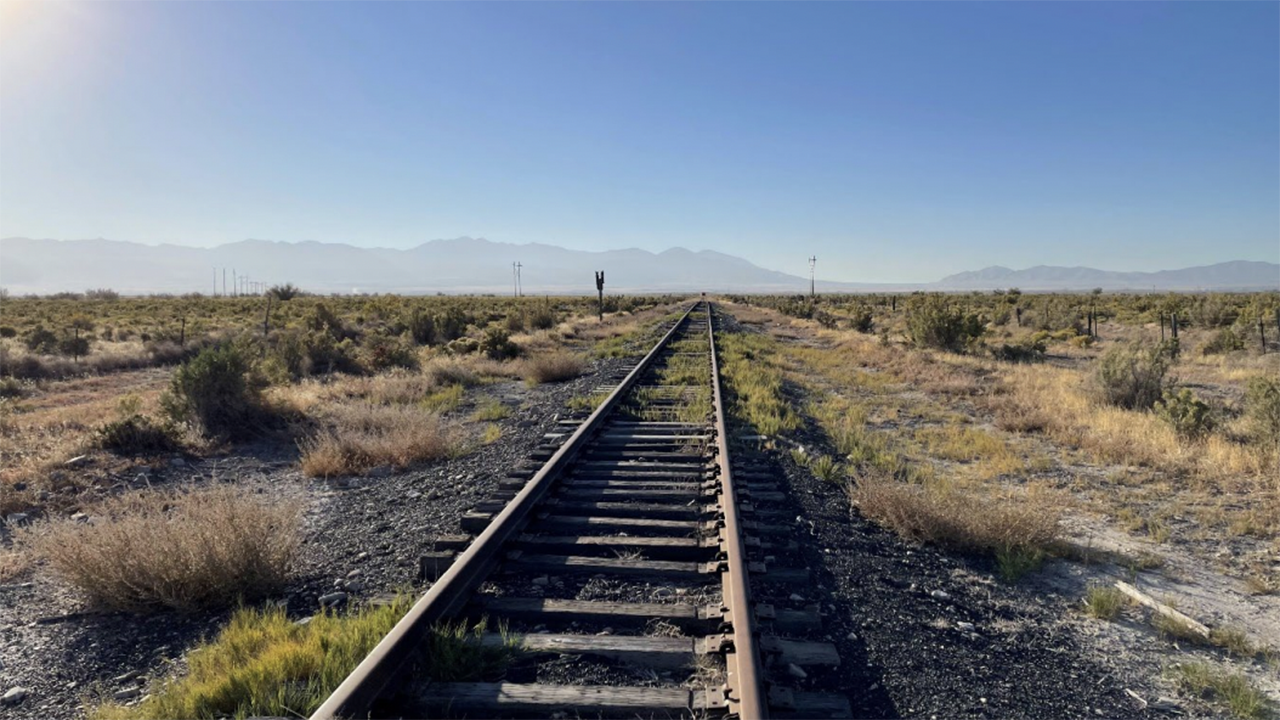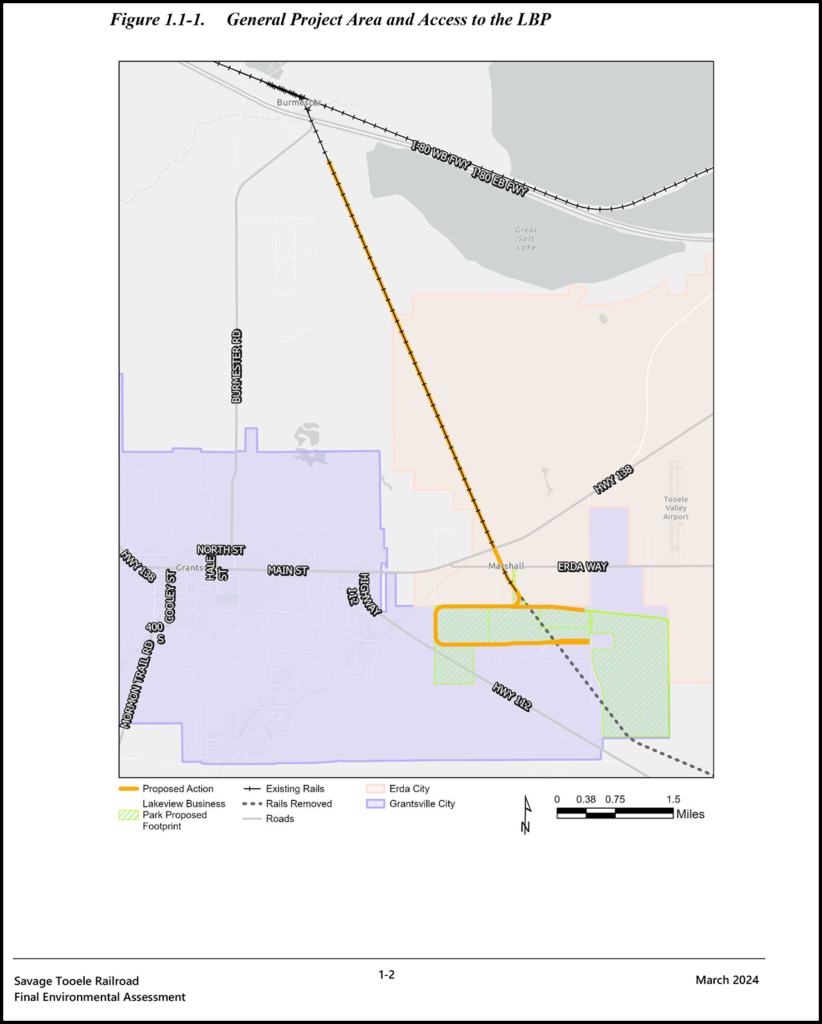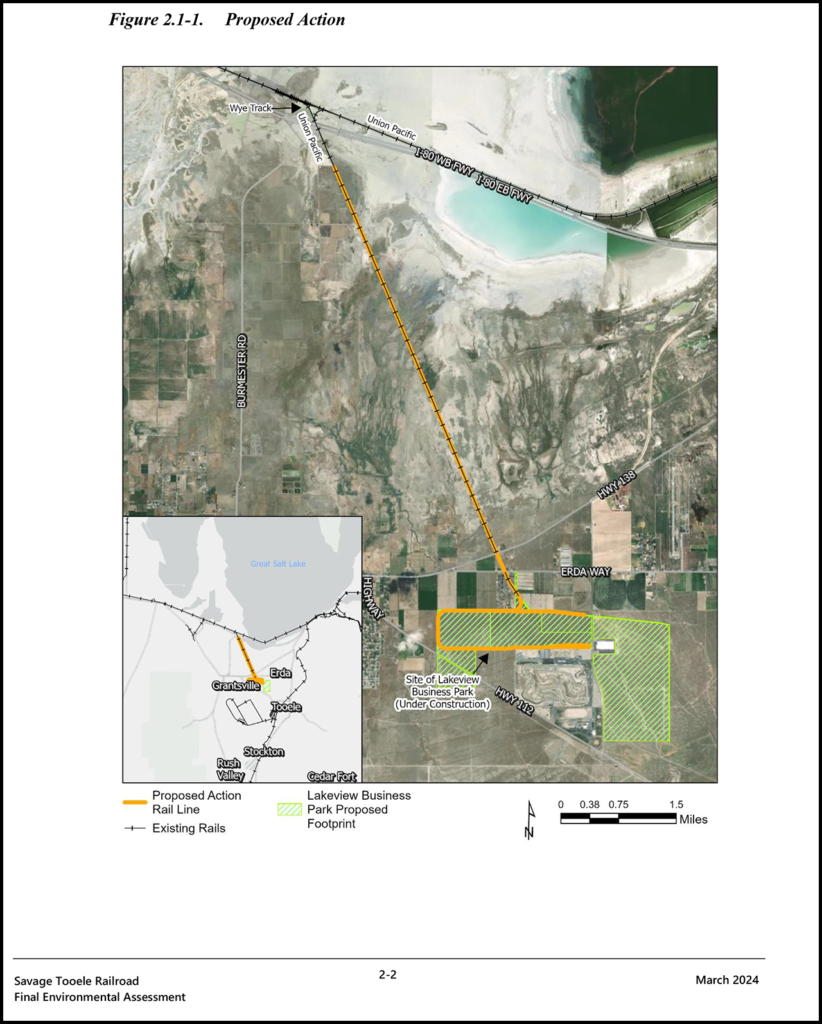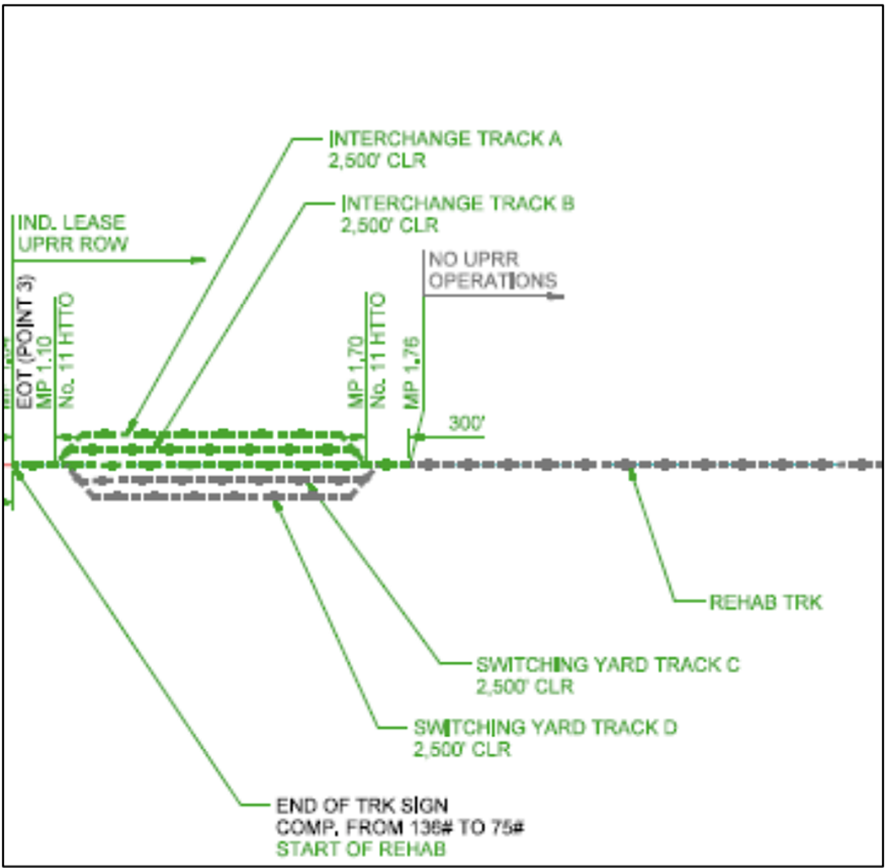
STB Issues Final EA for Proposed 11-Mile Utah Rail Line
Written by Marybeth Luczak, Executive Editor
Savage Tooele Railroad Company has proposed reinstituting common carrier freight rail service over an approximately six-mile segment of the former “Warner Branch” (abandoned in 1983 by UP predecessor Western Pacific Railroad Company), and to construct approximately five miles of new railroad line within the Lakeview Business Park, which has been under development since 2020 in Tooele County, Utah. (STB Photograph)
The Surface Transportation Board’s (STB) Office of Environmental Analysis has released a Final Environmental Assessment (EA) for Savage Tooele Railroad Company’s proposal to construct and operate an 11-mile rail line in Tooele County, Utah. The STB will use the assessment to help determine whether or not to approve the project.

The proposed rail line would re-establish a former branch line’s connection to Union Pacific’s (UP) Shafter Subdivision at Burmester, Utah, and link with the Lakeview Business Park in Grantsville, Utah (see map above). Savage Tooele Railroad Company in June 2022 sought authorization for its proposal stating that Park tenants are currently only able to receive and ship commodities by truck, and that “Tooele County is one of the fastest growing areas in the country and does not have sufficient rail transportation infrastructure to meet future transportation and logistics needs,” STB’s Office of Environmental Analysis said in its report (download below).
Savage Tooele Railroad Company is forecasting the operation of one roundtrip train (two trains per day, one in each direction) along the 11-mile line and the transport of 1,200 carloads in the first year of operation, which could expand to up to 8,000 carloads in the future, depending on Park tenants and their demand for rail transportation. Train lengths are estimated to range between 900 feet and 1,500 feet and comprise between 12 and 20 railcars on average per train. Savage Tooele Railroad Company plans to use two locomotives per train: Tier 0+ GP-38s or similar units with approximately 2,000 h.p. It also projects that gross tonnage would be approximately 2,600 tons southbound into the Park and 680 tons northbound to the interchange tracks, though the numbers may evolve over time based on actual customer needs.

The STB’s Office of Environmental Analysis report specifies that Savage Tooele Railroad Company would re-institute common carrier service over an approximately 6-mile segment of the former Warner Branch (abandoned in 1983 by UP predecessor Western Pacific Railroad Company); tracks remain on some 5.75 miles of the right-of-way. It would also construct about five miles of rail line within the Park, which is currently under development and has two tenants receiving commercial truck service. Additionally, it would build four 2,500-foot segments of ancillary switching (or interchange) track to offload and onload railcars to and from the UP main line. Savage Tooele Railroad Company anticipates that construction would take approximately six months.
The STB’s Final EA follows the issuance last fall of a Draft EA and completion of a 30-day comment period. It analyzes the potential environmental impacts of the proposed line and sets forth the Office of Environmental Analysis’ final recommendations to the STB, including recommended environmental mitigation measures.
Because the proposed line would be built on existing rail right-of-way, “there would be fewer environmental and historic impacts than would be the case with construction on entirely new right-of-way,” the Office of Environmental Analysis said in the report. The impacts “range from no impacts to some impacts, which can be minimized with mitigation.” The resources for which the proposal would have no or de minimis impacts are vibration; cultural resources; air quality; energy; land use, zoning, and local plans; environmental justice; and cumulative impacts. The resources for which the proposal would have some impacts are noise, grade crossing safety, grade crossing delay, biological resources, water resources, hazardous materials, and climate change, according to the Office.
Savage Tooele Railroad Company provided 37 voluntary mitigation measures addressing a broad range of environmental issues, and the Office reported that it is recommending 25 additional mitigation measures “to further minimize project-related impacts.”
STB will now consider the transportation merits of Savage Tooele Railroad Company’s proposal, and the entire environmental record, including the Draft EA, Final EA and all comments received, as part of its final decision. If it decides to authorize the proposed line, the STB may impose conditions on company as part of that decision, including environmental mitigation conditions.




